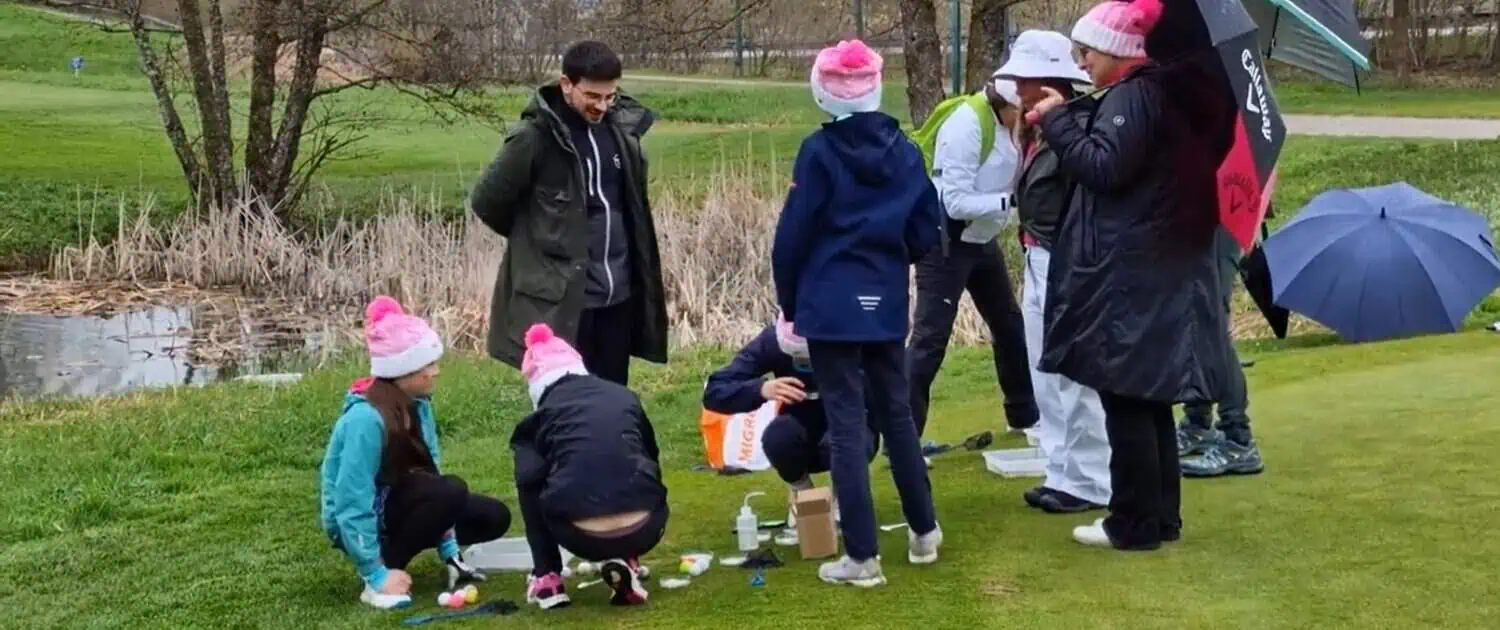The world is becoming more digital. Internationally, more and more people are moving to cities; in Europe, over 70% of people already live in cities, in the USA it is over 80%. And more and more parents are asking themselves how they can prevent children and young people from consuming too much digital content now that screen time has increased in many countries since the coronavirus pandemic.
Outdoor sports and leisure activities are seen as a healthy alternative when it comes to freeing young people from constant digital networking. Golf course operators could also make positive use of this idea, especially in urban regions. As golf courses generally have large contiguous green areas with ecological diversity in addition to the pure playing areas, they could also have the side effect of ensuring greater mental health and positive emotions among players. All according to the motto: out of the digital world, into real nature.
Report on biodiversity and health
The research report Will biodiversity actions yield healthy places by Erica N. Spotswood and other scientists, recently published in People and Nature magazine, is likely to be well received by readers in the golf industry. It supports the argument that natural green spaces in urban areas are good for health. The report, which summarized a total of 1550 international studies, comes to the conclusion that areas with a high value for biodiversity can also be beneficial for human health.
According to the scientists, seven factors play a key role in the design of green spaces. In addition to the size of the green space, networked habitats, the creation of biodiversity-promoting elements, the use of native plants and special elements such as water structures or large trees and, finally, the appropriate management of these areas are crucial for a green space to be classified as high quality.
Golf courses that are committed to ecology almost always meet these requirements because they offer a variety of high-quality habitats for plants and insects in addition to meadows, hedges, deadwood and bare ground areas, woodland or ponds.
Improved child development
“The results (of the study) show that many elements that support biodiversity coincide with a large series of positive health effects,” the researchers summarize. “These effects included better physical condition and mental health, more physical activity, improved childhood development and social effects.” In addition, people benefit from large green spaces in inner-city areas because they are less exposed to sun, heat, air pollution and noise. The authors speak, for example, of reduced cardiovascular diseases or reduced diabetes.
So everything is fine – is the new Spotswood study perfectly tailored to golf courses?
Not quite: unlike contiguous parks or natural forests, golf courses do not consist exclusively of areas that primarily promote biodiversity. Instead, fairways, tees and greens are considered by scientists to be just like soccer pitches or other well-maintained green spaces under grass. Biodiversity is not promoted here and the use of pesticides in particular is not considered to be beneficial to health.
Multifunctional use of golf courses
A negative objection, but one that can be significantly mitigated by using golf facilities in a multifunctional way. This is also recommended by the GEO Foundation in its Public Facilities Guidelines for the sustainable operation of public golf facilities.
One such multifunctional use would be the golf course as a learning arena. In the context of so-called green classrooms, school lessons do not take place in the usual school building, but somewhere on the golf course grounds.
In Sweden, this approach has already been investigated as part of a scientific project by STERF called Go outdoors and use the golf course in an educational way. Although the teachers needed a little time at the beginning to realize the wide range of teaching opportunities offered by a golf course, the results of the study were extremely positive in the end.
“A more open teaching atmosphere” was one of the positive effects, as was the development of a “deeper understanding and contact with the pupils”. The outdoor exercise and the change of location in particular provided a better learning experience for the pupils, who felt more comfortable here than in the classroom. According to Anders Szczepanski, who led the study, high biological diversity can also be combined with a high degree of pedagogical diversity. According to him, lessons on the golf course did not lead to poorer learning progress.
In Germany, as part of the Golf Biodivers project, in which four universities are working on biodiversity on golf courses, teaching units are being relocated to golf courses. Teachers’ feedback has been consistently positive regarding student attention.
The value of golf courses is therefore not just that they offer a pure sports area. Quite the opposite: the rough areas around the fairways, the meadows, wooded areas, ponds and hedges, which already increase biodiversity in urban areas, can achieve additional positive effects through secondary use for non-golfers. Be it because they provide walking and cycling paths, picnic spots or vantage points for observing nature, improving the quality of life and the mental and physical health of all those who use them. Be it because they contribute to giving children and young people positive impulses for their personal development.
Separated from the smartphone and reconnected to nature – a successful model for golf courses with lots of biodiversity.







 Golf de Chantilly, France
Golf de Chantilly, France